Comparison of ISA SCSI / IDE / EIDE controllers
--- Premise
This area have not been sufficiently "researched" on a big enough scale, especially considering baseline / maximum performance, and stability.
Occasionally, I come across pieces of information here and across the broader Internet. However, it's evident that these insights are often subjective due to the scarcity of comprehensive data. I've decided to conduct a more thorough investigation, gather sufficient information, and attempt to minimize the subjectivity.
--- Context
During the 386 era, ISA local starge controllers reached their zenith. However, they were superseded by VLB and PCI devices in 486 systems and beyond.
This initial post will concentrate on the 386 scenario, but findings from peak 286 overclocking experiments will be shared subsequently (more on that below).
--- Approach
1. Evaluate a wide range of IDE and SCSI controllers of different types.
2. Collect information from three 386 + one 286 test scenarios. Select the right hardware components accordingly - motherboards, processors, ...
3. Conduct well-known and relatable tests, presenting only these for improved readability while carrying out more detailed testing behind the scenes.
Few more notes:
Over 40 different ISA controllers of different brands/models have been tested.
Intention is to cover the range between years 1990 and 1996, even 1997.
Few more cards will be added soon. After that "tactical" updates may occur from time to time.
The 4 test scenarios:
DTK PEM-4036Y is the smoothest, clock-to-clock fastest 386 motherboard.
Scenario 1: 386DX processor at 40MHz, 40MHz base frequency, 10MHz ISA bus frequency, 16Mb RAM, 256Kb L2 cache. As described here.
Scenario 2: IBM BL3 processors at 100MHz (2x50), 50MHz base frequency, 25MHz ISA bus frequency, 16Mb RAM, 256Kb L2 cache. As described here.
MSI MS-3124 is clock-to-clock slower than DTK PEM-4036Y. Problematic with some DLC processors. The highest watermark of 386 performance.
Scenario 3: IBM BL3 processors at 110MHz (2x55), 55MHz base frequency, 27.5MHz ISA bus frequency, 16Mb RAM, 256Kb L2 cache. As described here.
Dunson Electronics 286-16 is the fastest, most scalable 286 motherboard.
Scenario 4: Intersil 286 processor at 30MHz, 30MHz base freqiency, 30MHz ISA bus, 2Mb RAM, 0 wait states. As described here.
--- Constraints
Testing was conducted exclusively in DOS 6.22. Few intriguing controllers were evaluated in Windows 3.11. However, the results in Windows 3.11 did not differ significantly from those obtained in DOS.
Only CF cards were utilized, with no mechanical HDDs involved. Mechanical HDDs introduce a greater degree of unpredictability. By using CF cards, this variability is reduced, allowing the focus to shift almost entirely to the performance of the controllers themselves.
ZuluSCSI and Acard adapters were used to connect CF cards to SCSI controllers. Acard adapters offer greater compatibility because some controllers search for a boot device only at ID 0, whereas ZuluSCSI is permanently set to ID 1. However, ZuluSCSI performs better under conditions of peak overclocking.
Caching controllers were tested with maxed-out RAM.
--- Controllers
Unknown (SiS 83C66)
Works well under normal conditions - the 10MHz ISA test.
Passes the 25MHz test with write-access issues.
Passes the 27.5MHz test, subtle flakiness. Write-access and auto-progression issues.
Works in the 30MHz test.
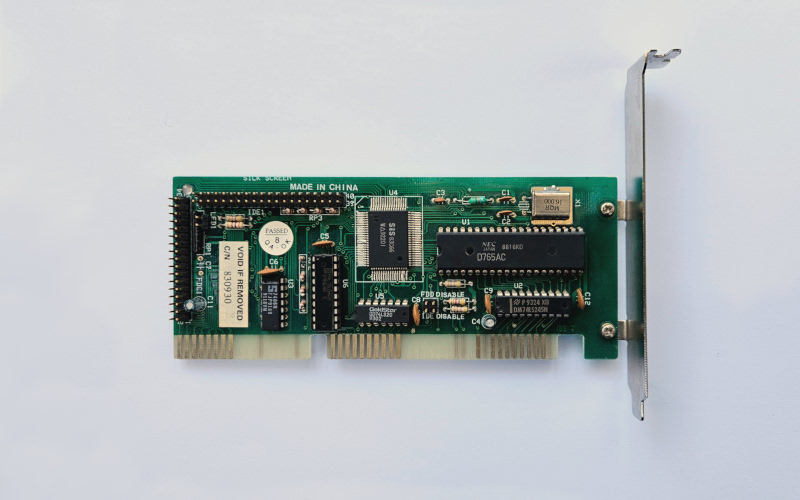
Unknown TK-82C869/865 2J D01 (UMC UM82C863F, UMC82C865F)
Numerous controllers featuring this (or early) UMC chipset were produced across various brands and models.
Touched quite a few of them. The pictured one represents them all. Standard controllers.
Do not handle overclocking with 386 and later class hardware, but do surprisingly well in the 30MHz 286 test - one of the best there.
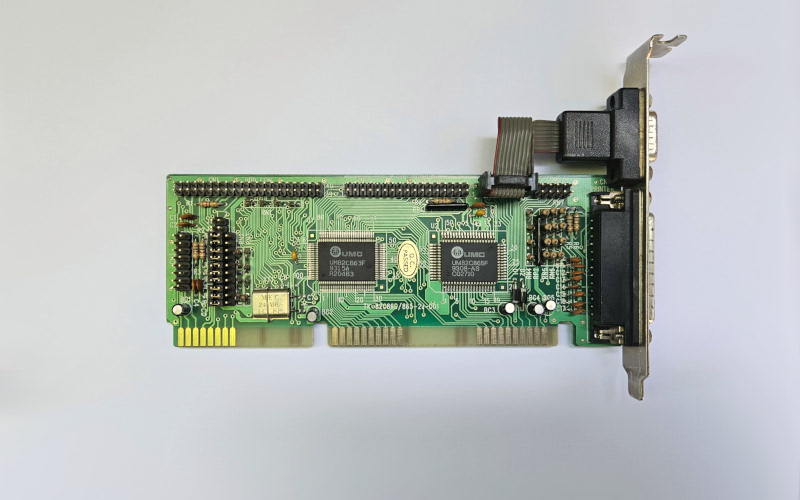
Unknown TK-82C869/865 2J D04 and Unknown MIO V2.2
The best IDE controllers out there.
Scale really well on overclock. Can even handle 0 SRAM wait states with the MSI motherboard - crazy. But still write-access issues with CF cards under extreme overclock.
Only the green card passes the 30MHz test.
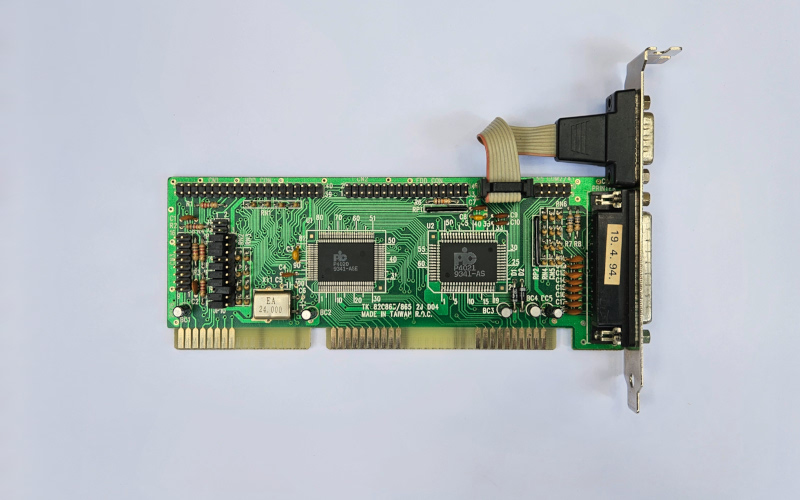
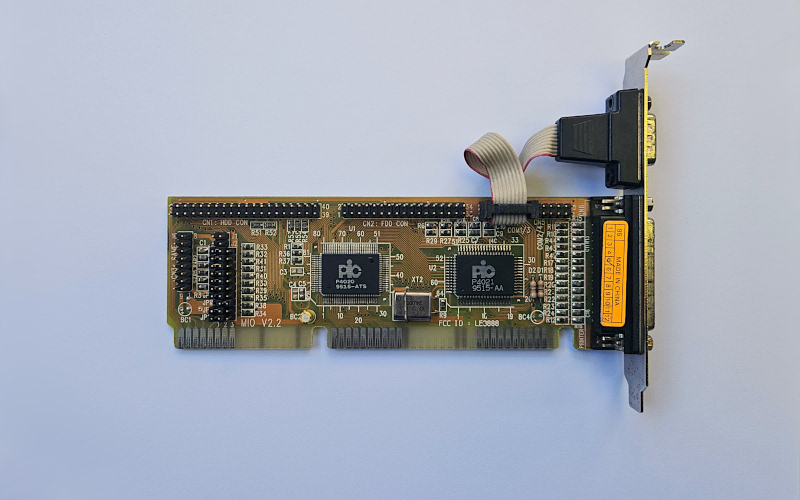
Unknown SMART-A2-B (Mobic MS62C452, WDC WD37C65CJM)
Passes all tests.
Unstable in the 30MHz one.
Write-access and auto-progression issues at 27.5MHz.
Write-access issue at 25MHz.
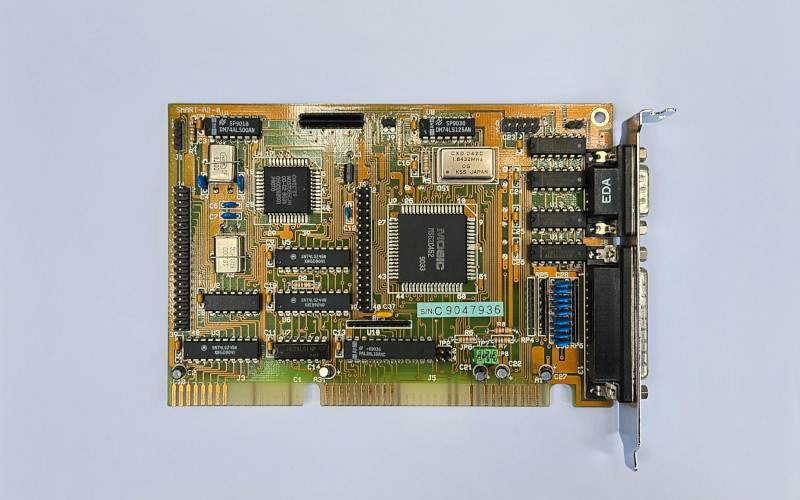
Unknown (Acer M5105 A4E)
Works well up to 25MHz. Write-access issues in this test.
Nothing more to say really.
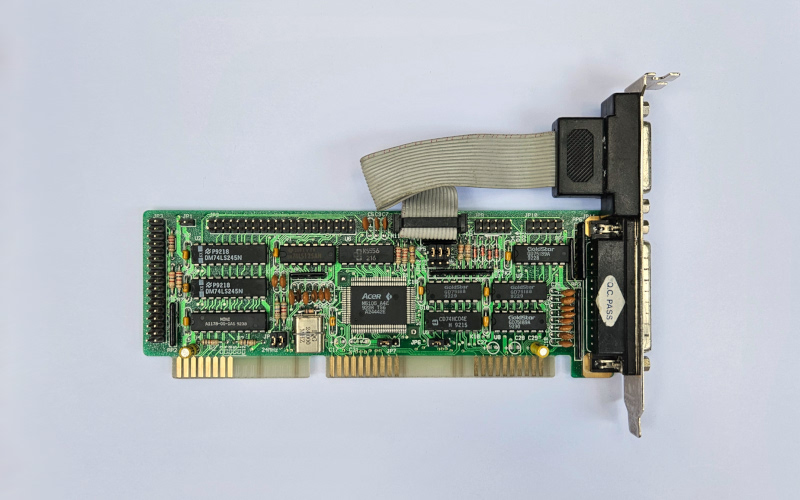
Unknown (FDC37C65B)
Cannot complete DOS boot the 30MHz test.
Functional at up to 27.5Mhz but with write-access and auto-progression issues under extreme overclock.
Works well in the 10MHz test.
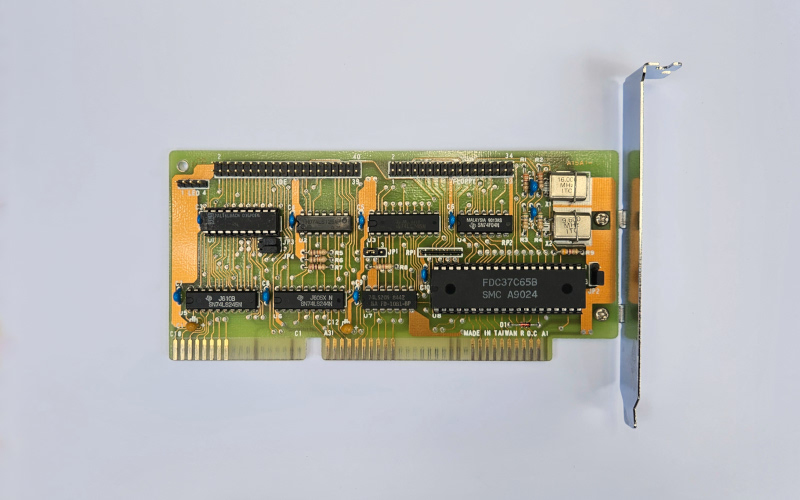
Unknown (MX 9028G, NCL NCL2020-50)
Standard controller. Nothing special about it.
Fails the 27.5 and 30 MHz tests.
Passes the 25MHz one with the usual write-access issue with CF cards.
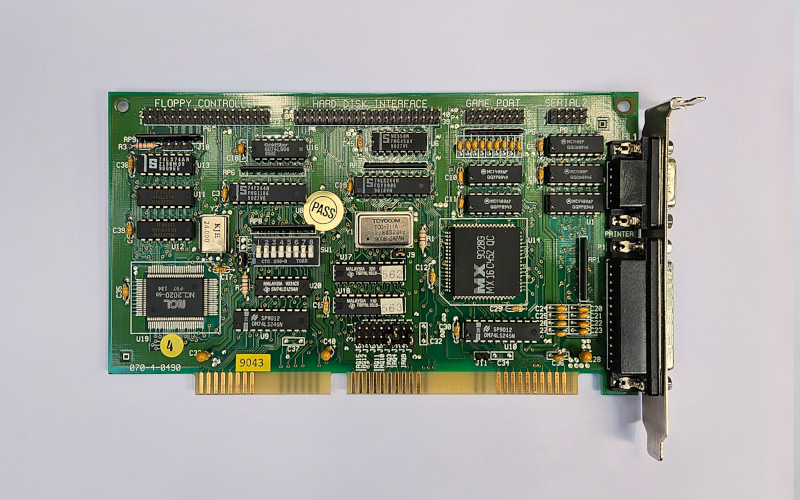
Acculogic sIDE-4/HP
Scales very well.
Functional in the 30MHz test, but with plenty of instabilities - system locks upon write to storage, etc.
Functional in the 27.5MHz test, but exhibits the write-access and auto-progression issues.
Works well at 25MHz. Write-access issue.
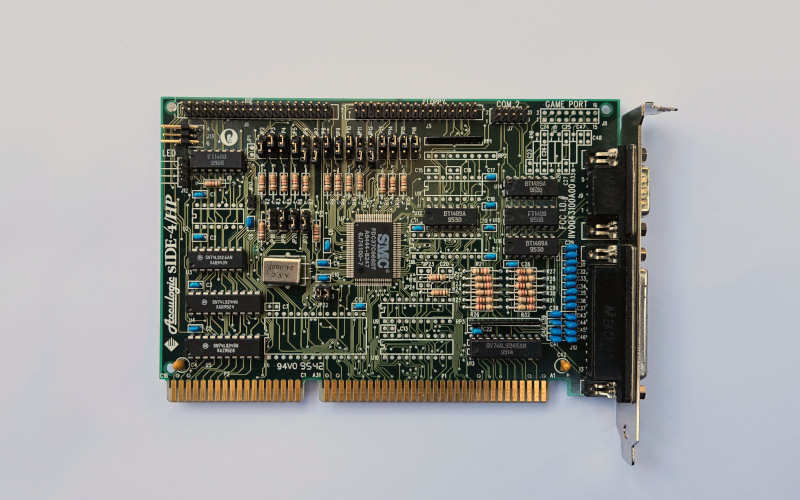
Unknown RT-1206-B
Standard controller.
Works fine in standard conditions - the 10MHz ISA test.
Fails the 25 and 27.5 MHz tests.
Surprisingly works well in the 30MHz 286 test.
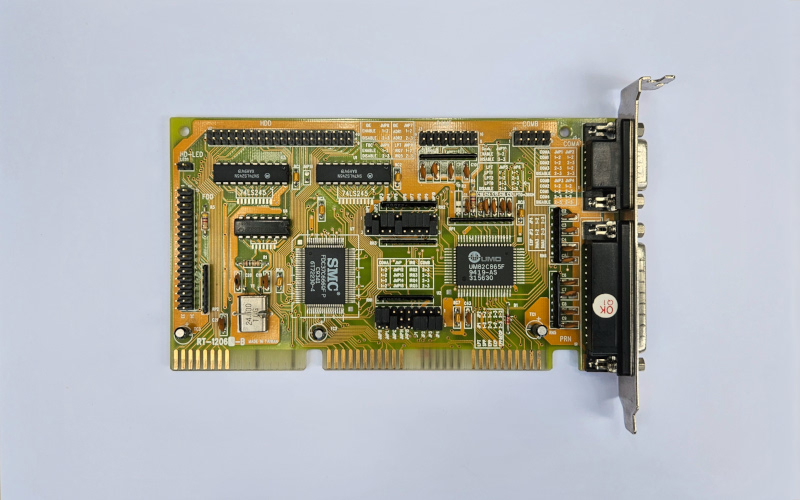
Acculogic sIDE-4
Standard controller.
Does not handle well overclocked ISA bus.
Functional in the baseline 10MHz test.
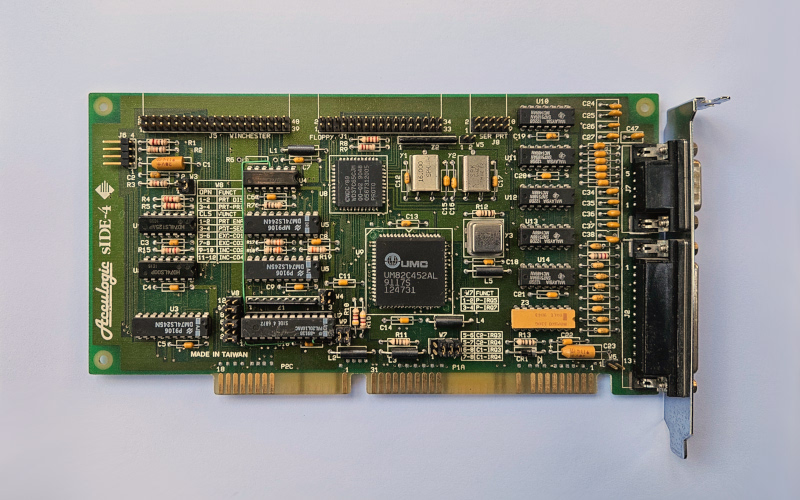
Acculogic sIDE-3/Plus
Standard controller.
Works well with 10MHz ISA bus.
Passes the 25MHz one. Exhibits the usual write-access issue with CF cards.
Fails the 27.5 and 30 MHz tests.
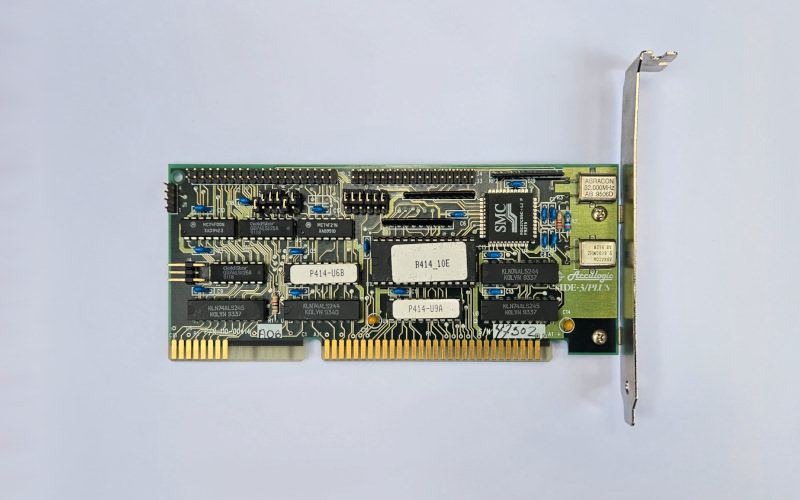
Promise EIDE Pro (LGS Prime 3B)
Write-access and auto-progression issues in the 27.5MHz test.
Fastest IDE in the 25MHz test. Write-access issues.
One of the best controllers overall, especially considering its other qualities.
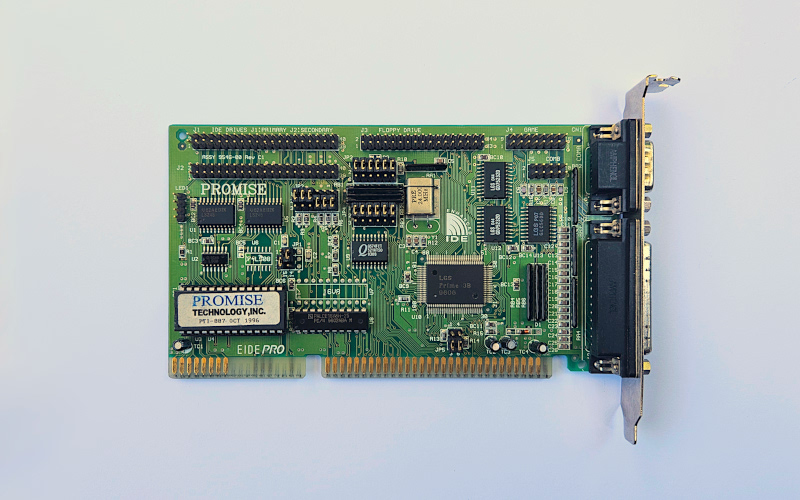
DTK PTI-227 (Windbond W83757F)
Many controllers featuring this, or early version of the chip, have been produced. Evaluated 5 or 6 of them. They typically function well under normal conditions, but this is the only model that scales well on overclock, despite the occurrence of write-access issues. This particular controller ranks among the best available.
Works well at up to 27.5MHz, but makes the system unstable at 30MHz ISA bus in the 286 test.
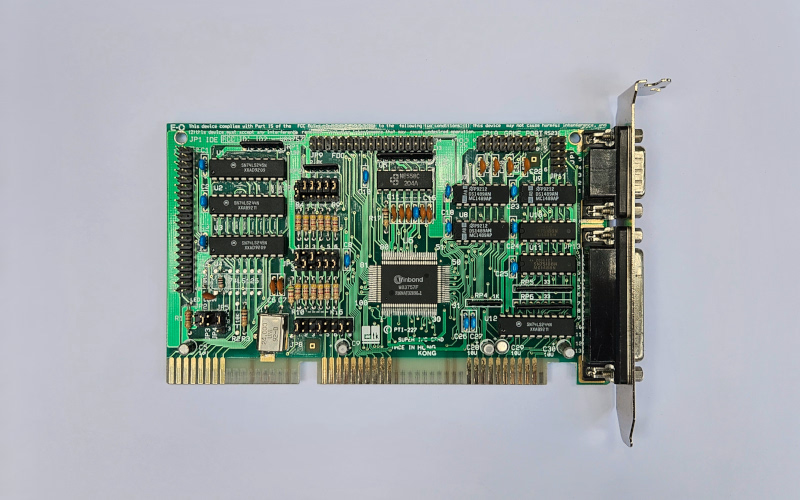
Chicony CH-101B REV.1.0
Middle of the pack device.
Passes the 25MHz test with write-access issues, fails 27.5 and 30 MHz ones.
Works well under normal conditions.
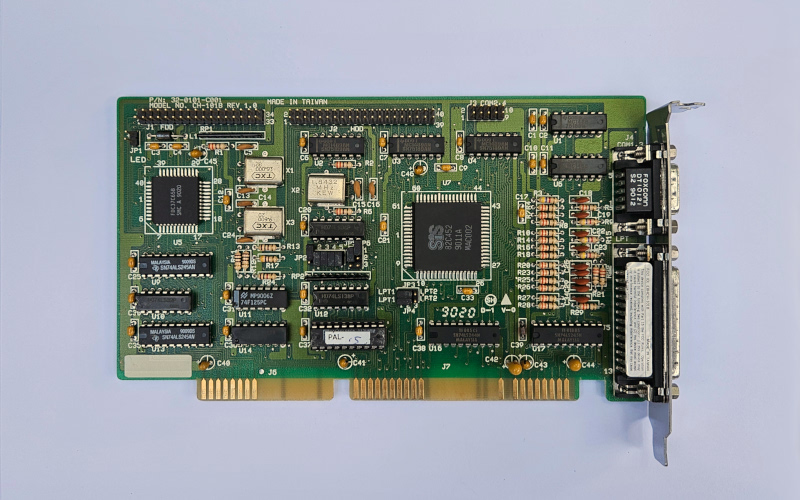
Promise SuperIDE
Slow assembly.
Fails the 30 and 27.5 MHz tests, passes the 25MHz one without write-access issues because of the low performance.
Works well under normal conditions, but slow.
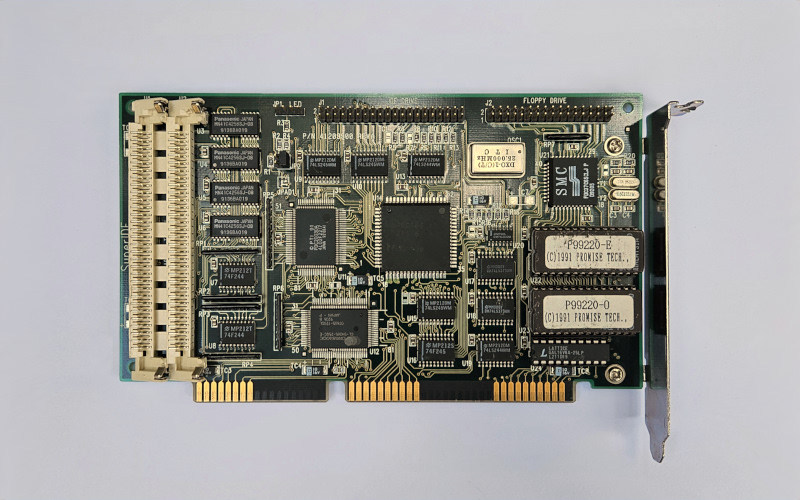
Promise DC-2031
Slow assembly.
Fails the 30MHz test - POST hangs.
Fails the 27.5MHz test.
Works up to 25MHz. No write-access issue since its performance is below the threshold where they start occurring.
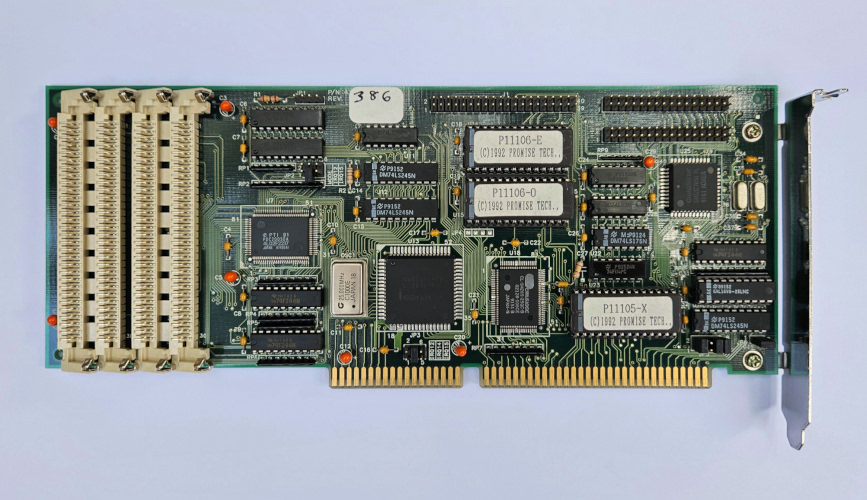
Longshine LCS-6641
Causes no lights in the 30MHz test.
Unstable in the 27.5MHz.
Does well up to 25MHz. Because of its relatively low performance it manages to avoid the write-access issue.
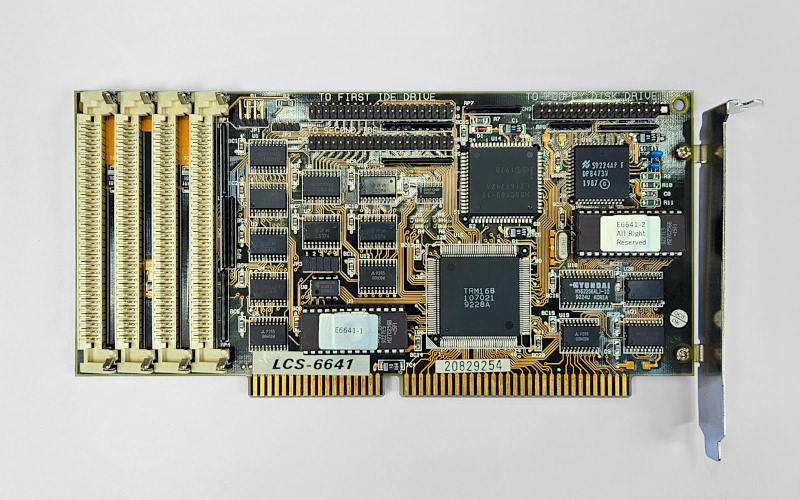
Unknown Prime 2C MKIII
Numerous controllers featuring the Prime 2C chip were produced across various brands and models.
Touched quite a few of them.
The pictured one represents them all.
Standard controllers. Do not handle overclocking. Function fine under normal conditions.
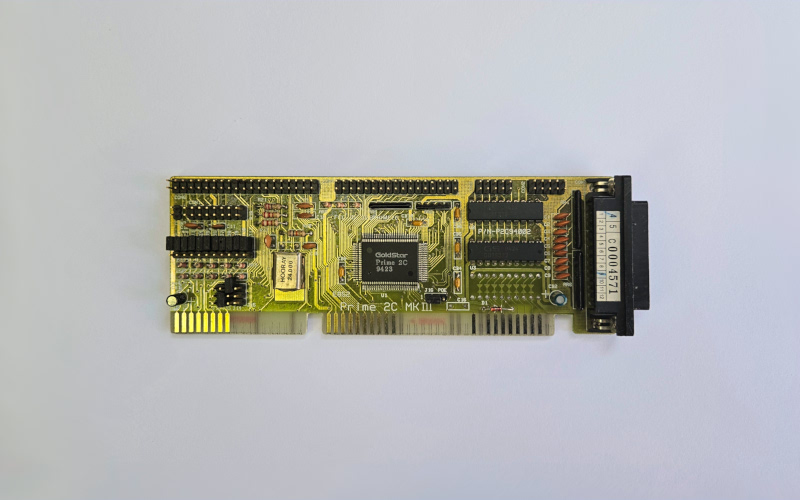
Unknown PM540
Passes the 10MHz test - above average performance.
Fails all other tests - does not boot to DOS.
Apparently Winbond had room for improvement in their W86C453P chip.
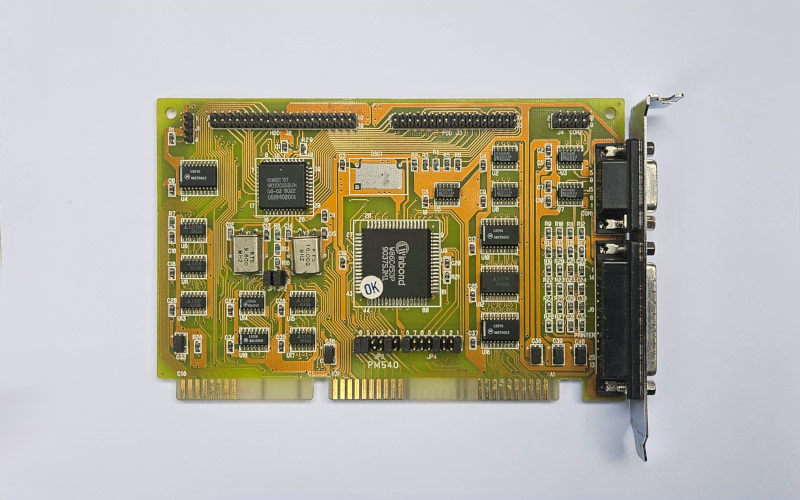
Tekram DC-800B
Can hang during BOOT with IBM BL3 L1 cache enabled.
DOS5 support must be enabled, or fails to BOOT from the attached local storage device, but can from FDD. Strange.
Handles overclocking rather well.
Fails the 30MHz test - boot to DOS fails - almost there. Too bad.
DMA speeds cannot exceed 6.67Mb/s for 27.5MHz and 8Mb/s for 25MHz.
Unusually difficult to set it up in the 10MHz session.
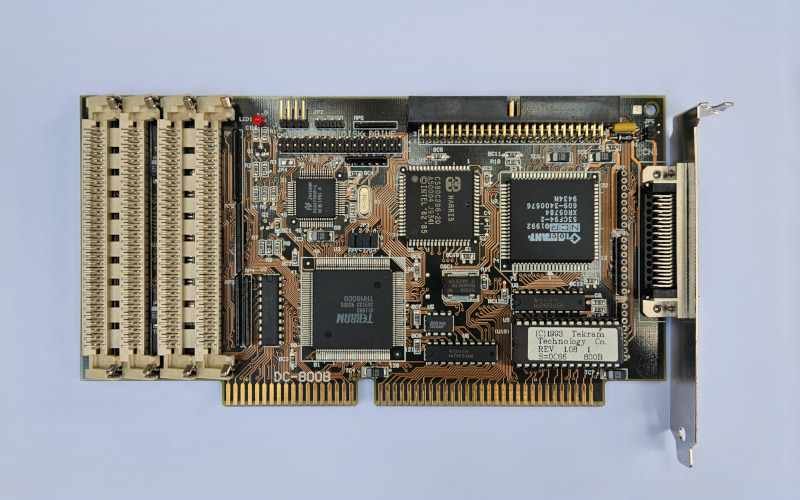
Adaptec AHA-1510/1520/1522A
No BIOS menu. Configured through jumpers. No DMA speed settings. Requires Acard adapter to see the bootable device at ID 0.
Works well at up to 25MHz.
It is interesting to trace the progression in capabilities of the different Adaptec AHA models here.
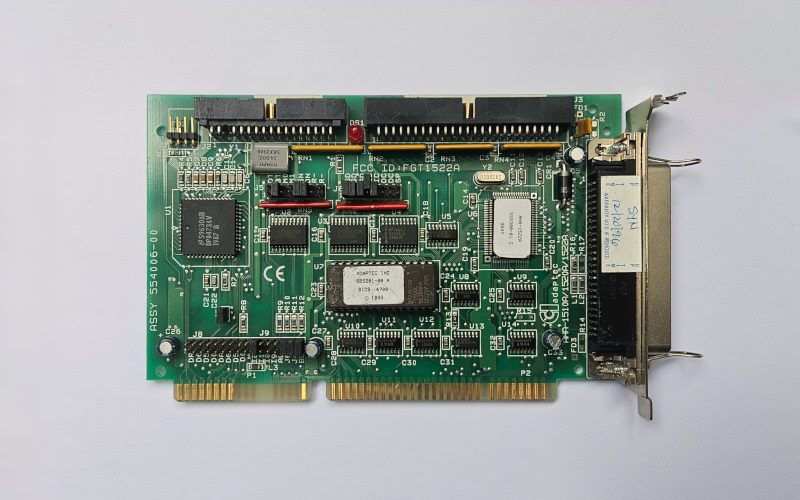
Adaptec AHA-1510/1520/1522B
A non bus-mastering controller. Can coexist with IBM BL3 L1 cache. A big plus.
Scales really well.
DOS boot often hangs in the 30MHz test - almost there. Too bad.
Solid in the 27.5MHz test, but exhibits the auto-progression issue with some apps/games.
Best performer in the 25MHz test along with AHA-1530P.
While AHA-1530P can function in 10Mb/s DMA speed, this controller cannot go past 6.67Mb/s.
Somewhat slow in the 10MHz test.
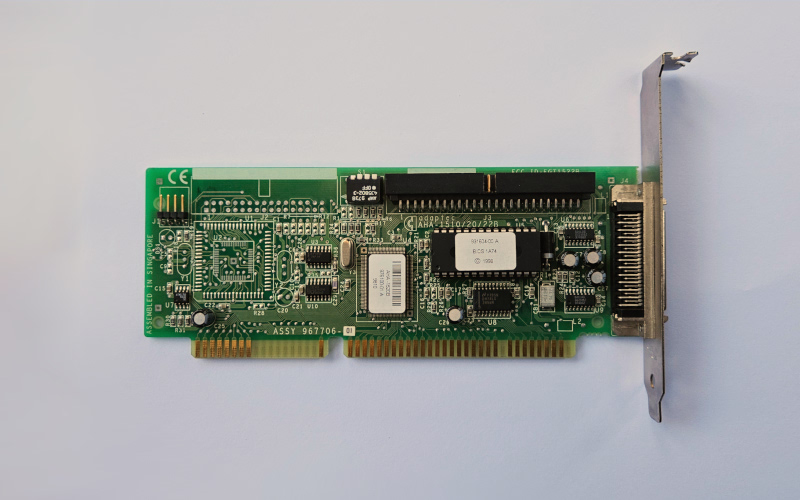
Adaptec AHA-1540/1542CS100
Requires Acard adapter to see the bootable device at ID 0.
IBM BL3 L1 cache issues.
Fails the 30MHz test - SCSI BIOS never starts initialization.
Fails the 27.5MHz test.
Passes the 25MHz one.
Overall slow and flaky device.
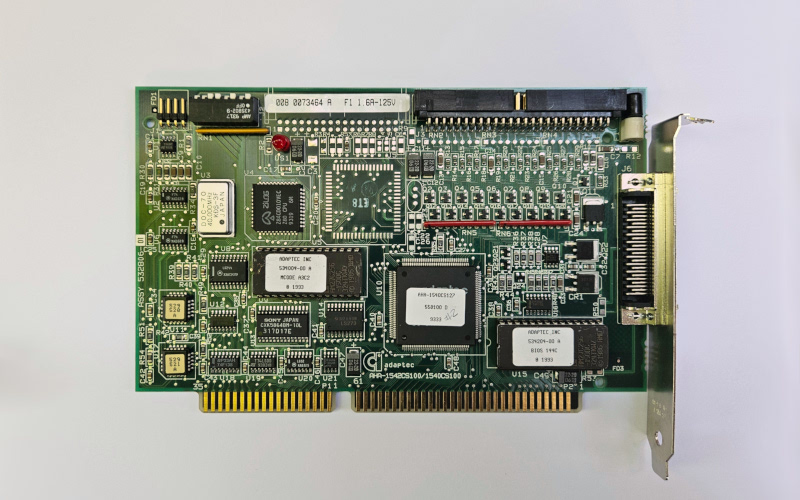
DTC 3280AS
Does not work with ZuluSCSI, needs Acard for bootable device at ID 0.
Fails the 30MHz test - POST hangs.
Fails the 27.5MHz test.
Works at 25MHz, but flaky.
Works fine under normal conditions.
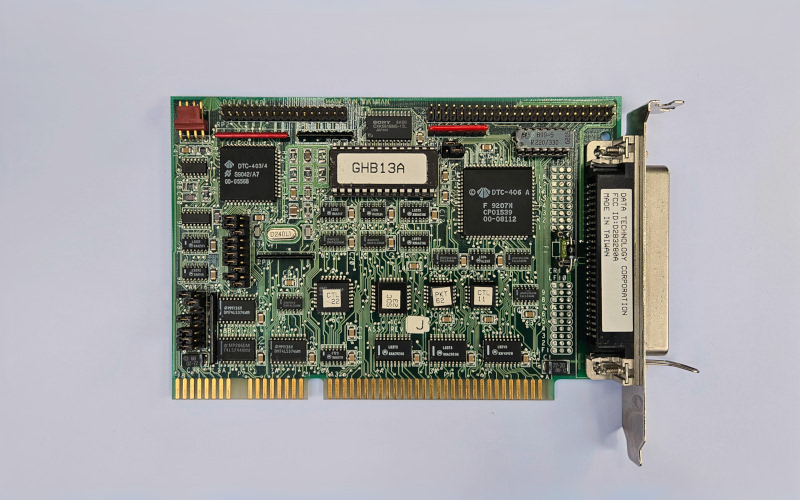
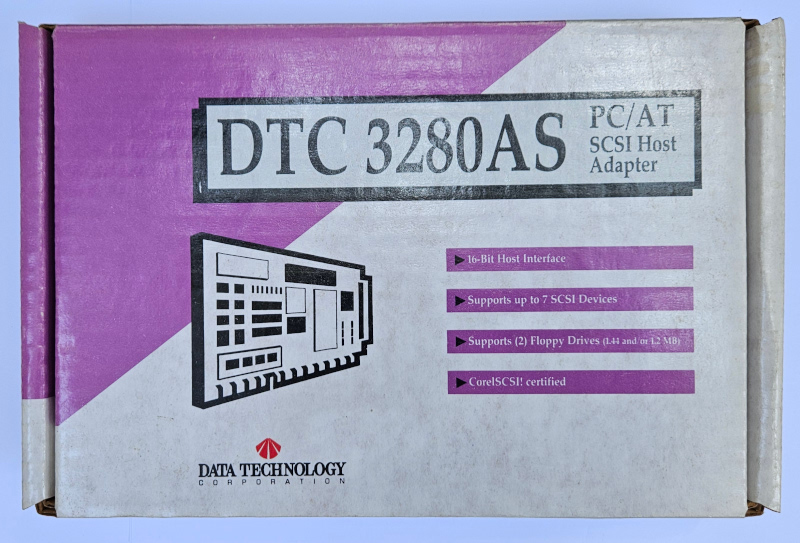
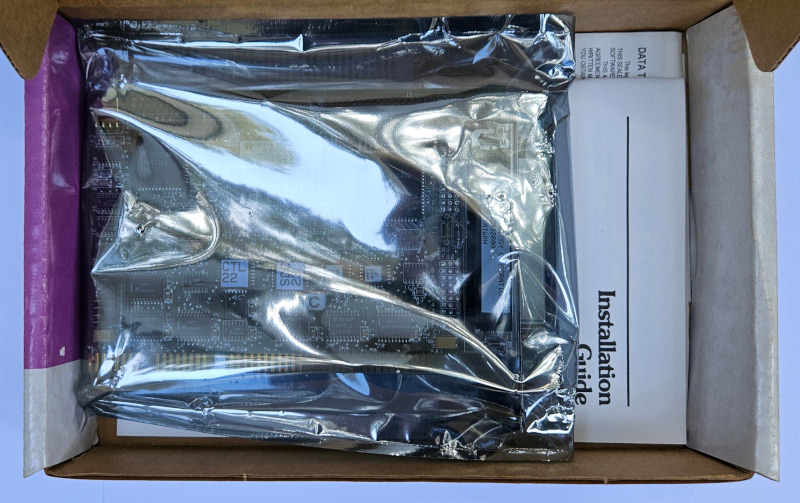
SIIG XL-221 (SCSI Pro)
Slow controller that does not handle overclocking.
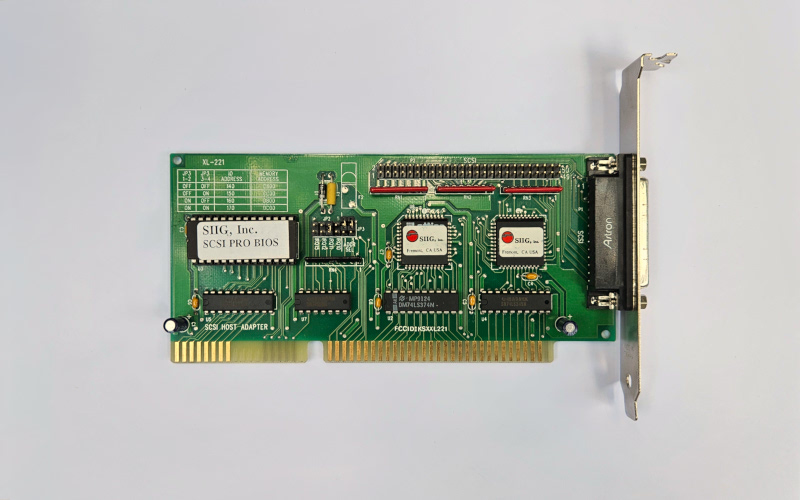
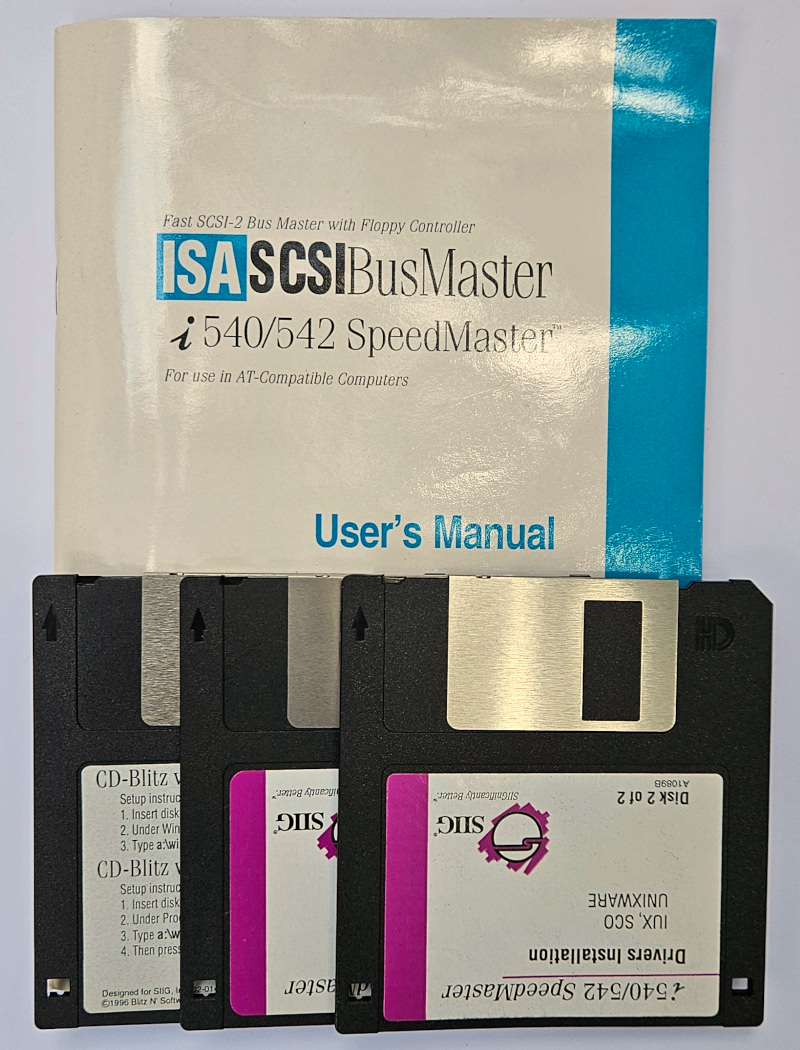
Adaptec AHA-1540/1542CF and AHA-1540/1542CP
Integrated RAM eliminates the need for ROM SHADOWING support in the motherboard BIOS.
SCSI BIOS does not start initialization in the 30MHz test.
Fails to recognize local storage device in the 27.5MHz test.
Works well up to 25MHz ISA at 6.67Mb/s DMA speed.
IBM BL3 L1 cache issues.
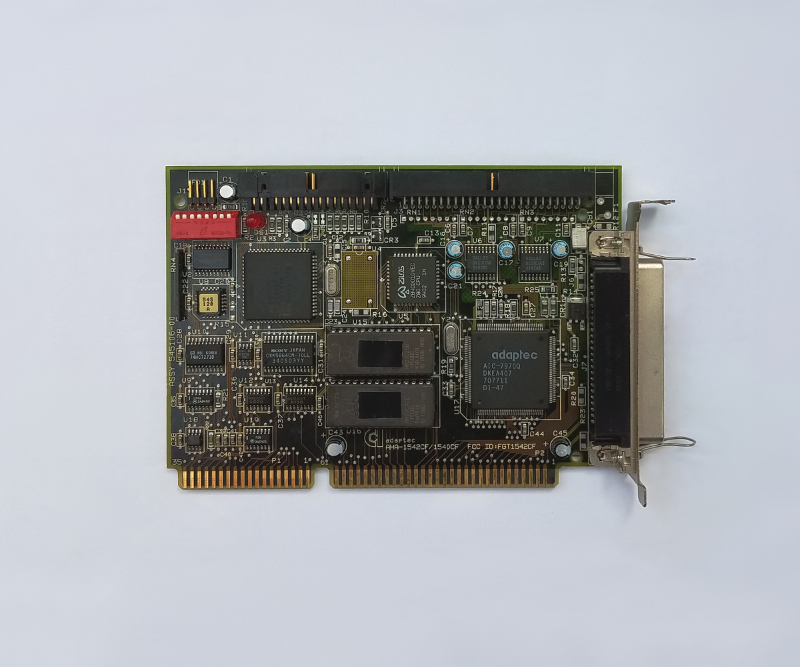
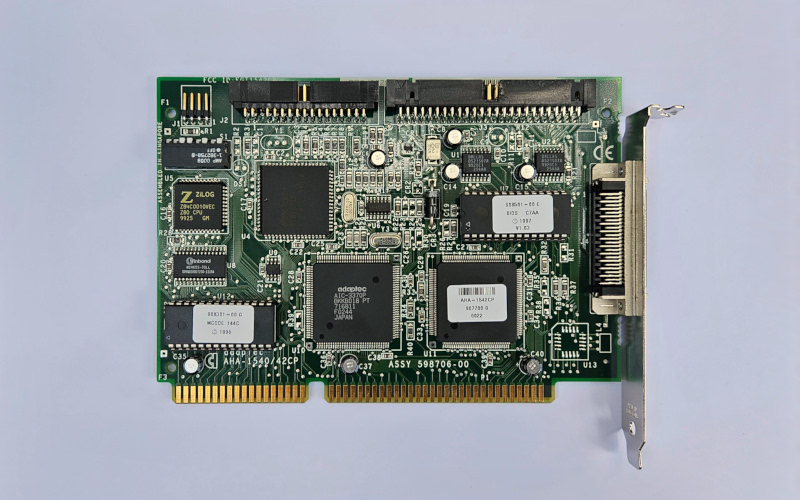
Adaptec AHA-1540/1542B
Needs Acard adapter to see bootable device at ID 0.
Fails the 30MHz test - DOS boot hangs.
Hardware conflict of some sort makes prevents it from working properly when plugged into the MSI MS-3124 motherboard - cannot run the 27.5MHz test.
Unstable in the 25MHz test even with the slowest DMA speed (5Mb/s), also IBM BL3 level 1 cache related issues. Works well at 10MHz, but slow.
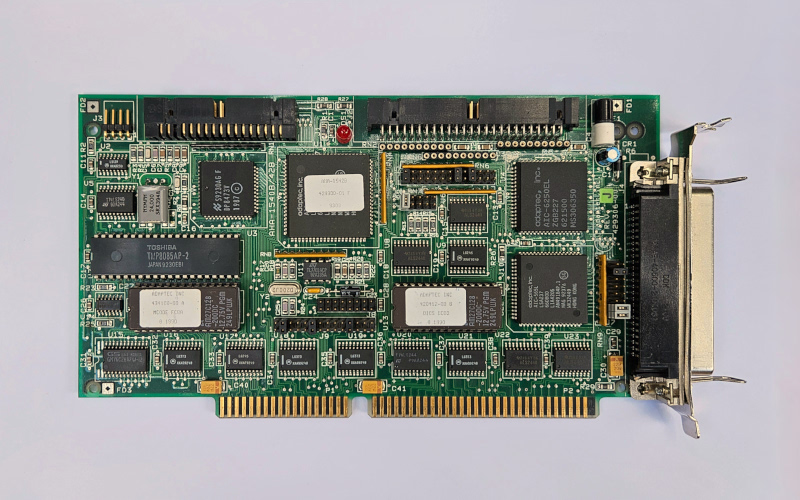
Adaptec AHA-1542A
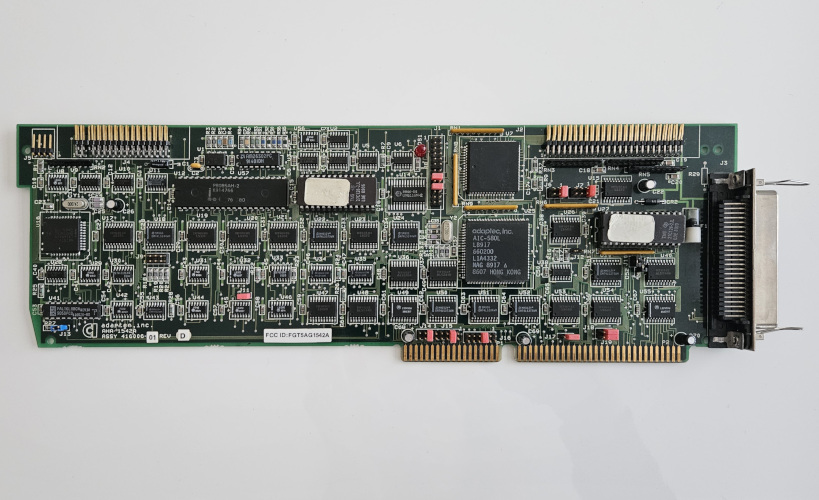
The attachment adaptec_aha-1542a.pdf is no longer available
Bustek BT-542B and Buslogic BT-542B
Needs Acard adapter to see bootable device at ID 0.
If ROM SHADOWING is enabled it can hang during POST or BOOT.
BIOS version 3.36b needed or can hang with CF cards.
Fails the 30MHz test - POST hangs or no local storage device recognized.
Hangs with DMA TEST FAIL error during POST in the 27.5MHz test.
Passes the 25MHz test but can hang if IBM BL3 L1 cache is enabled.
Works well under normal conditions and standard 386 processors.
Slow.
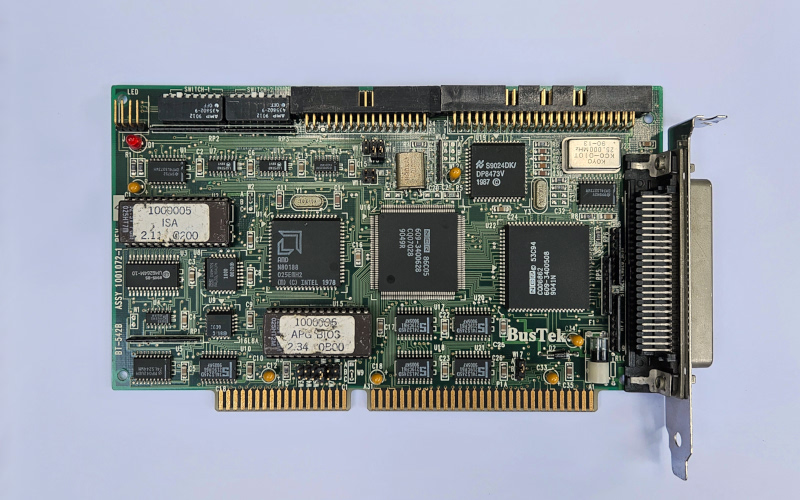
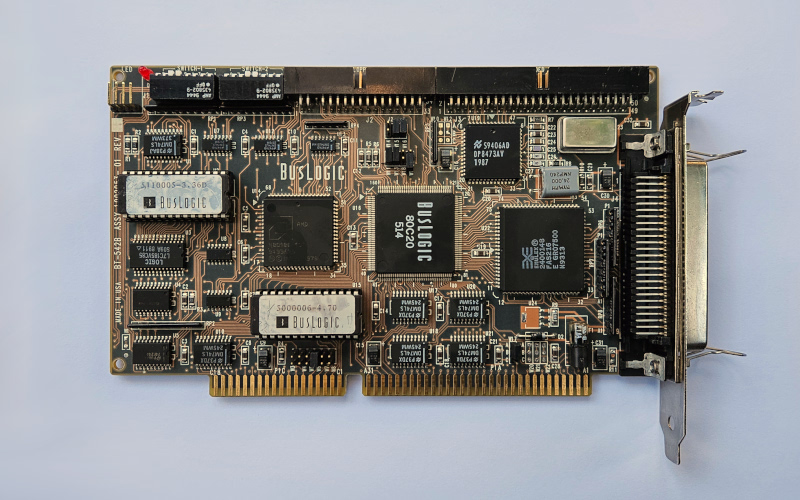
Trantor T160
Sees CF card but never stable enough for proper testing.
Am i missing something here ?
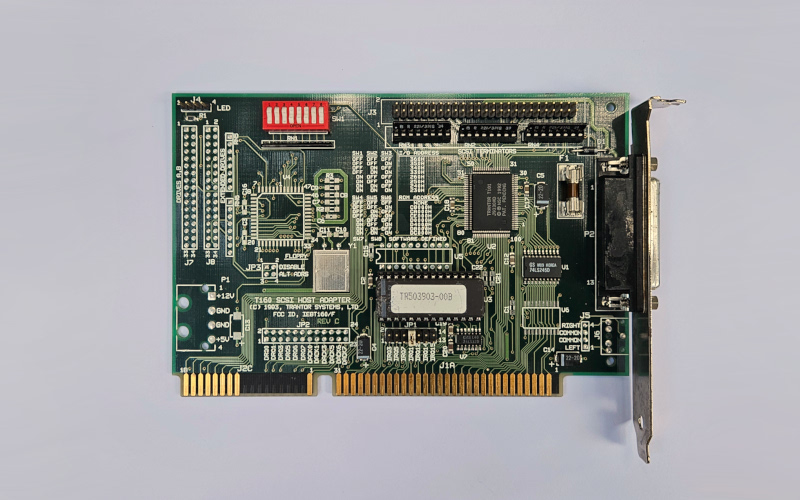
Adaptec AHA-1530/32P
A non bus-mastering controller. Allows it to coexist with IBM BL3 L1 cache. A big plus.
Scales really well.
DOS boot fails sometimes in the 30MHz test - almost there. Too bad.
Solid in the 27.5MHz test, but exhibits the auto-progression issue in some apps/games.
Technically can do 10Mb/s DMA speed. In this case perf is impressive - over 6.6Mb/s.
Best performer in the 25MHz test.
Somewhat slow in the 10MHz test.
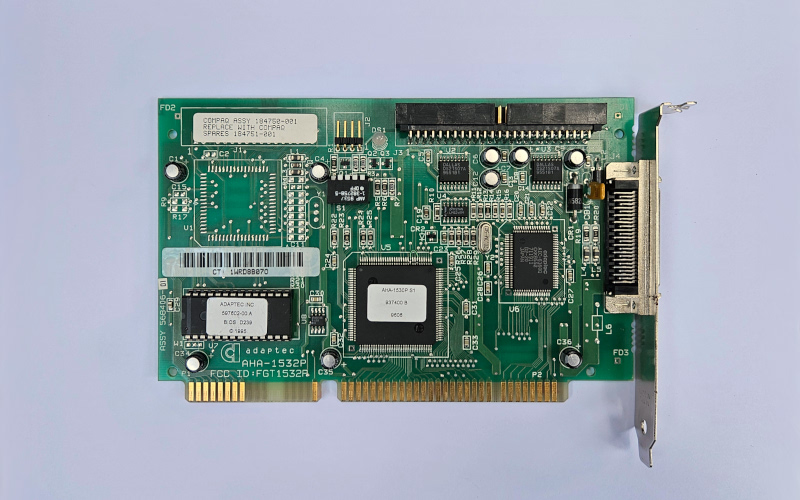
Advansys ABP-5140/42 and SIIG i540/542 SpeedMaster
Same device. Same BIOS.
The fastest ISA SCSI controllers. Very nice BIOS menu. Fast initialization.
Unfortunately do not play nice with IBM BL3 processors when their level 1 cache is enabled.
POST hangs in the 30MHz test.
Functional but not completely stable in the 25/27.5 MHz tests. Best option for up to 20MHz ISA bus.
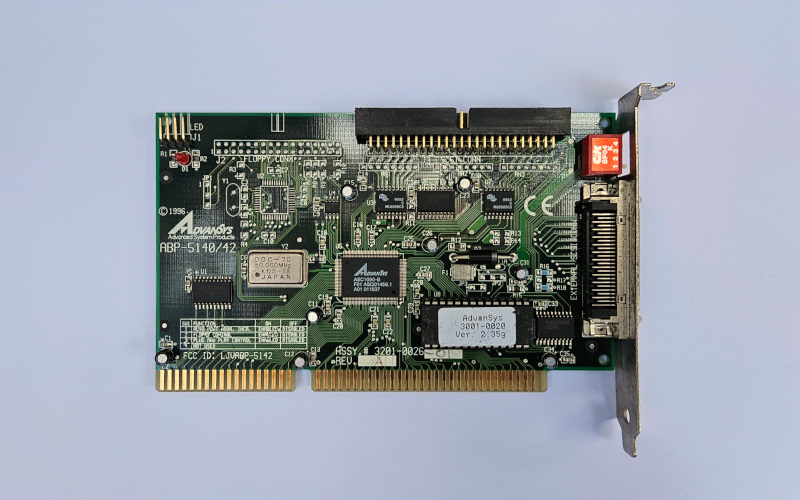
Driver disks:
The attachment siig_i540_542_speedmaster_disk1.zip is no longer available
The attachment siig_i540_542_speedmaster_disk2.zip is no longer available
The attachment siig_i540_542_speedmaster_disk3.zip is no longer available
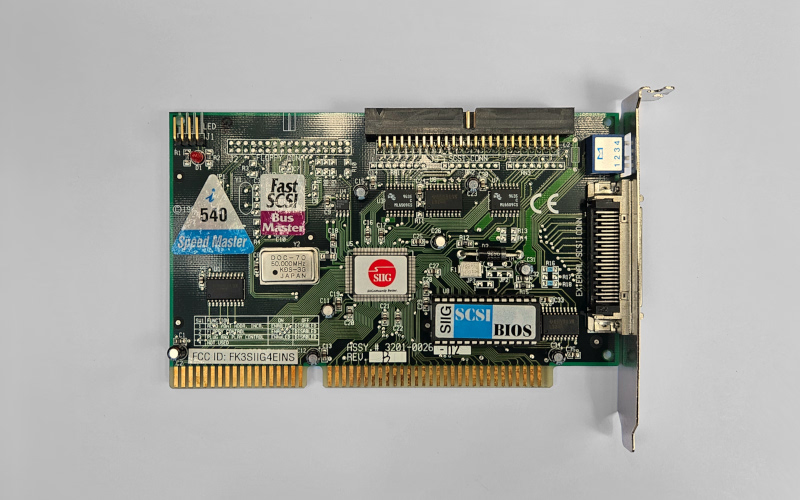
Future Domain TMC-1680
Was not able to make this controller recognize CF cards. Anyone ?
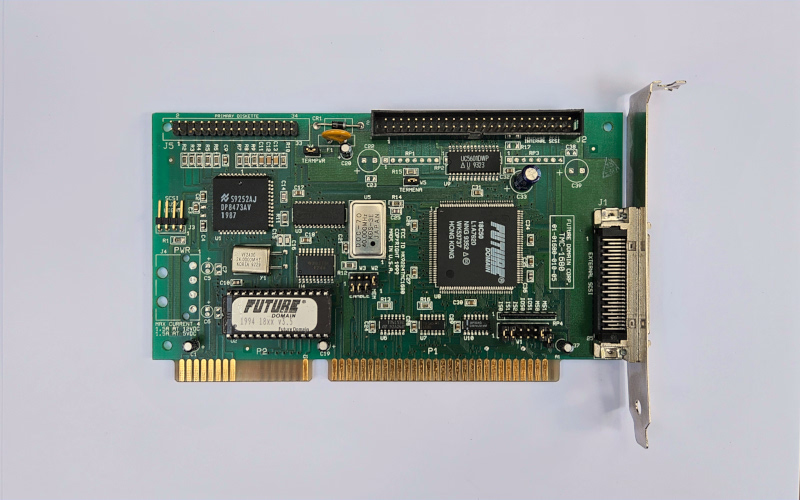
Buslogic BT-545S
Can hang during BOOT with IBM BL3 L1 cache enabled.
Fails the 30MHz test - POST hangs.
Hangs with DMA TEST FAIL error during POST in the 27.5MHz test.
Works well at 25MHz and lower.
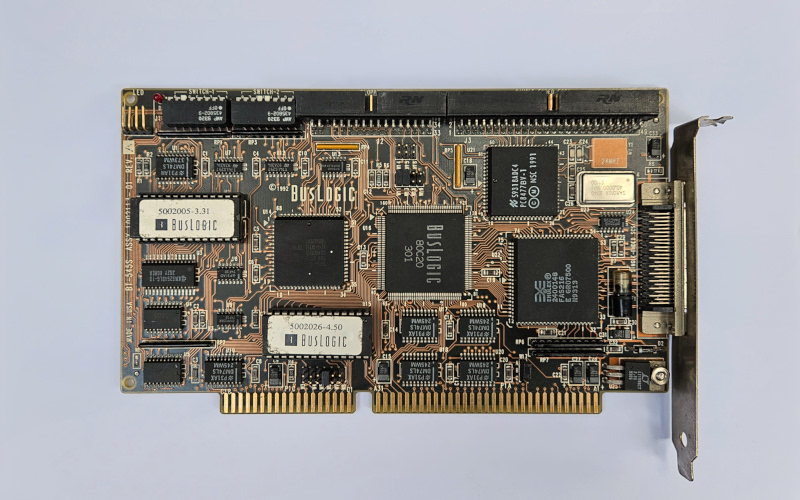
Adaptec AVA-1505/1515
Requires Acard adapter to see bootable device at ID 0.
Fails the 30MHz test - SCSI BIOS initialization hangs, or no local storage device recognized.
Fails the 27.5MHz test.
Passes the 25MHz one.
Slow.
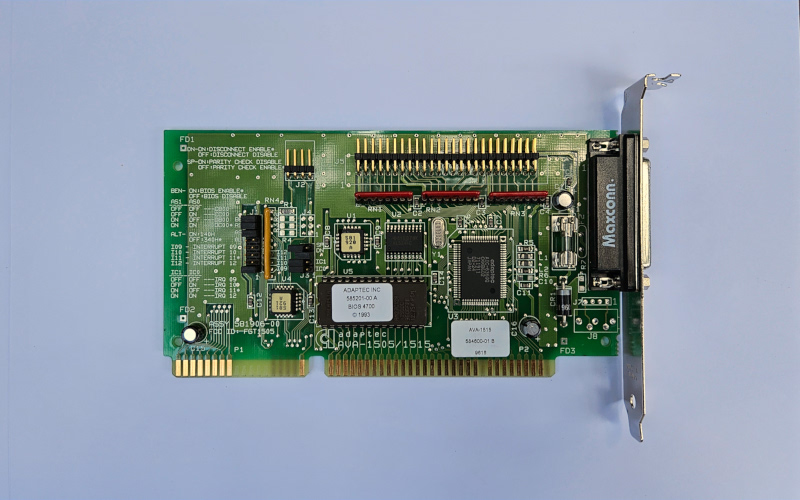
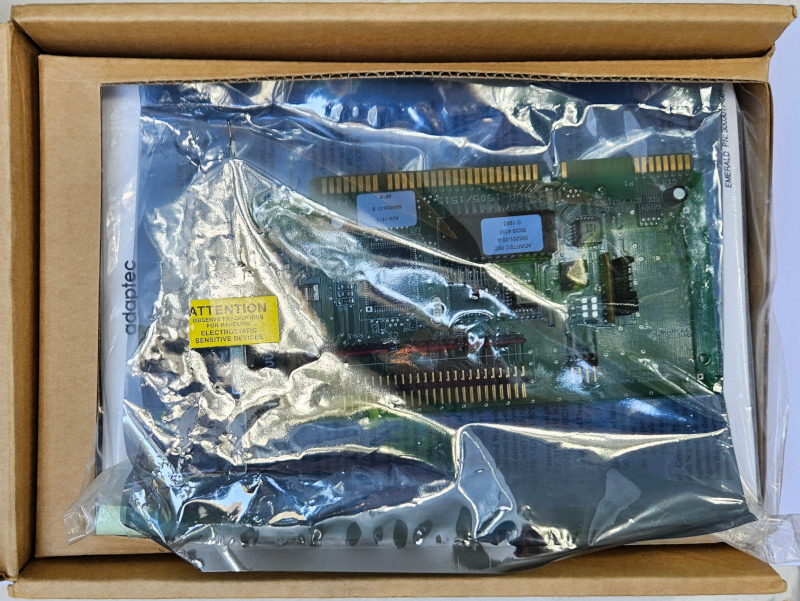
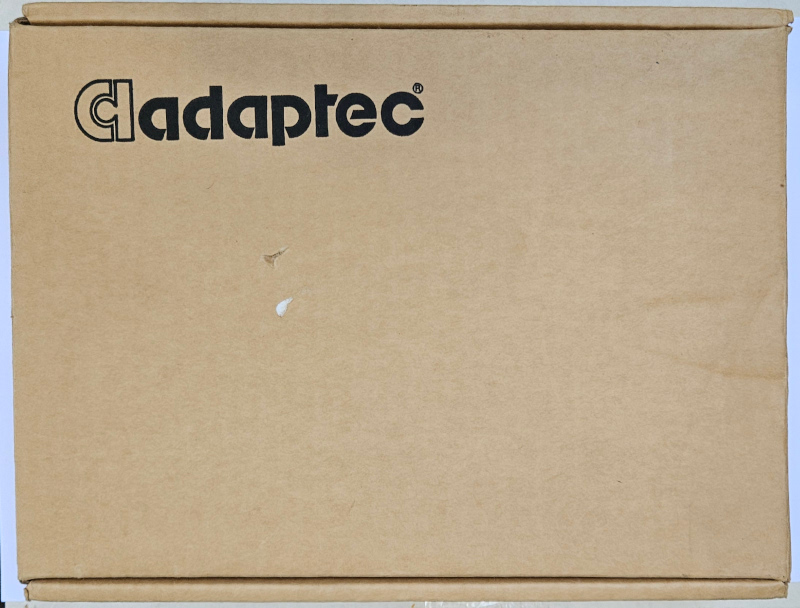
Promise DC-2040
Requires Acard adapter to see the bootable device at ID 0.
This controller will stop initializing during POST after some time. Switching ROM SHADOWING on/off from the motherboard's BIOS and resetting the system will kick the SCSI BIOS back in action.
Works at up to 25MHz ISA bus.
No issues with IBM BL3 level 1 cache.
SpeedSys graphics get corrupted. Cannot capture any metrics from it. It is the controller causing it for sure.
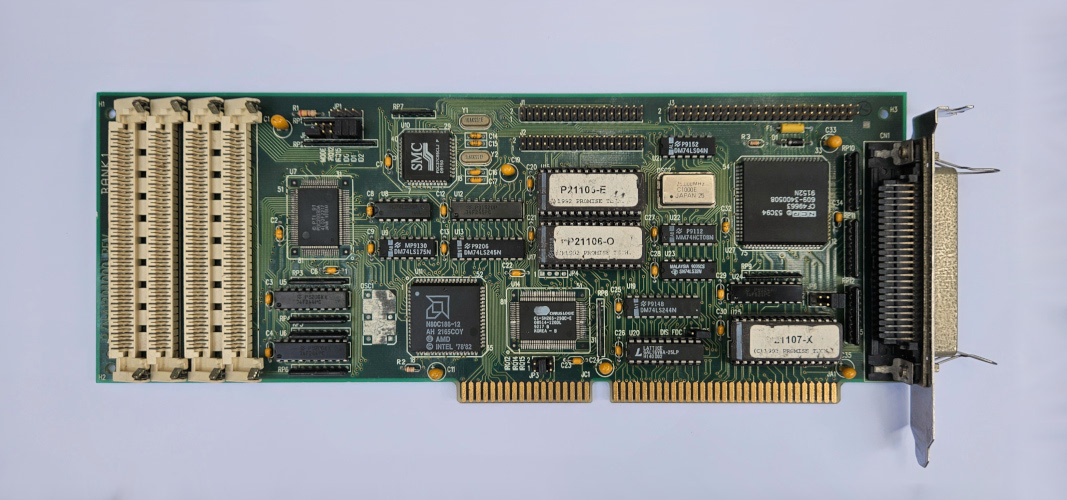
Procom ISA SCSI Xelerator
Impressive assembly. Includes RAM which eliminates the need for ROM SHADOWING support in the motherboard BIOS.
Very nice BIOS - highly automated, descriptive.
Clearly a high-end device in its time.
Fails the 30MHz test - POST hangs.
Fails the 27.5MHz test.
Works up to 25MHz. IBM BL3 L1 cache related issues - can hang the system.
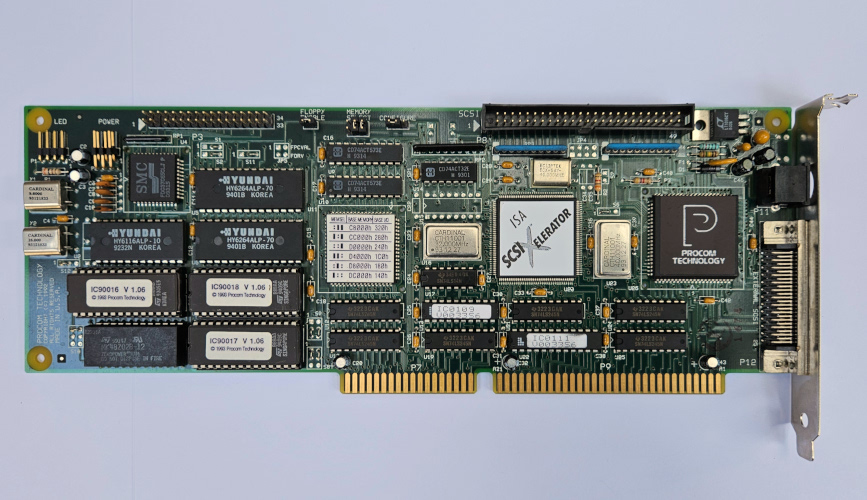
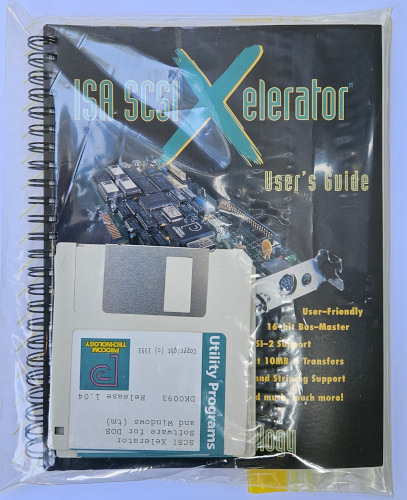
Always IN-2000
Does not handle overclocking.
Works well in the base 10MHz ISA bus test. Intermediate performance.
One interesting feature of this controller is recognizes partitions created from IDE controllers and does not require recreating/reformatting them. Very useful.
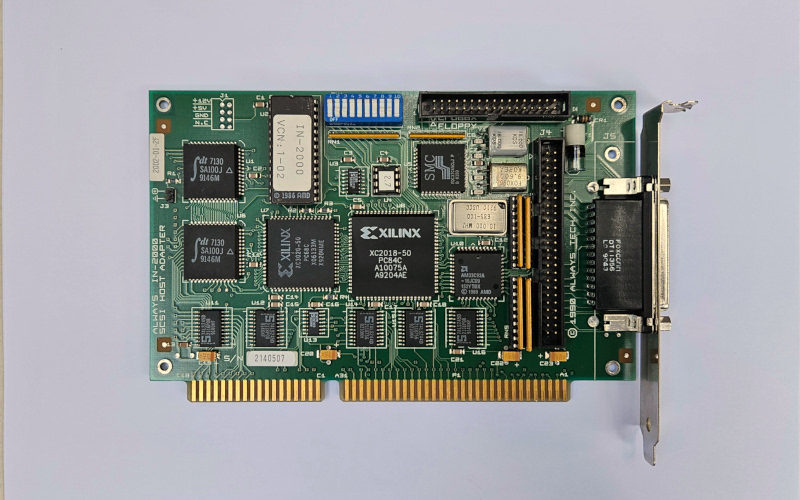
Acculogic ISApport
The controller appears disfunctional. At least i cannot get it to see CF cards.
Anyone ?
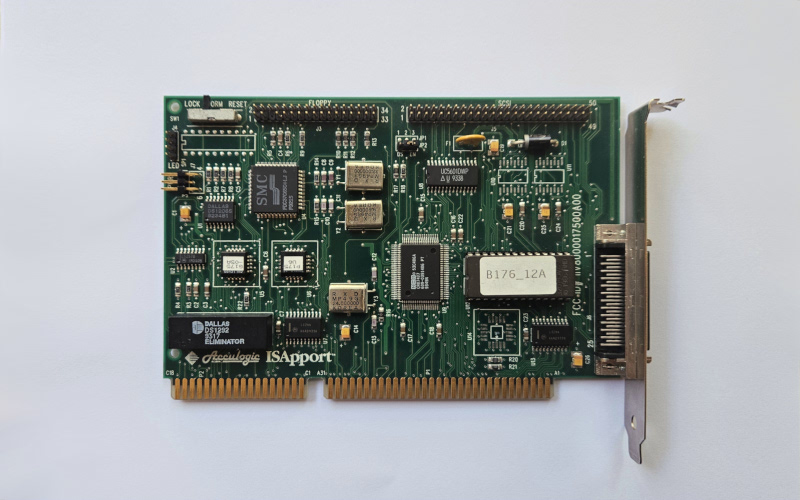
Adaptec AHA-1535A/AI
Not tested yet. Soon.
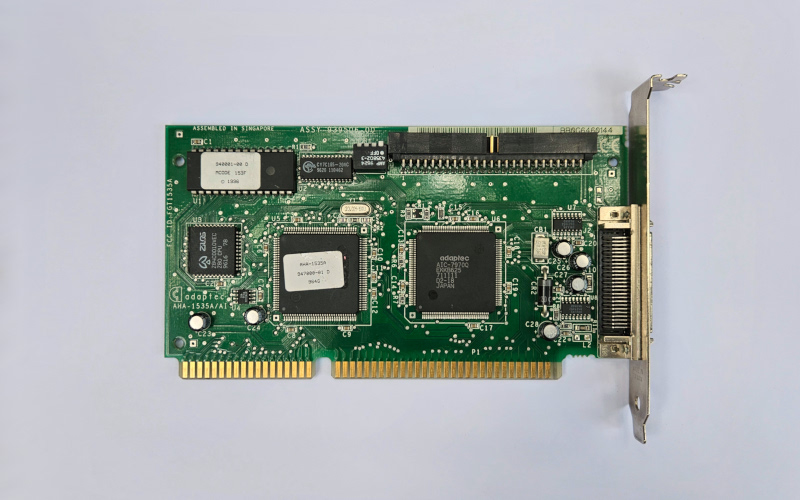
Adaptec AHA-1520/22A
A non bus-mastering controller. Allows it to coexist with IBM BL3 L1 cache. A big plus.
Works well at up to 25MHz ISA bus.
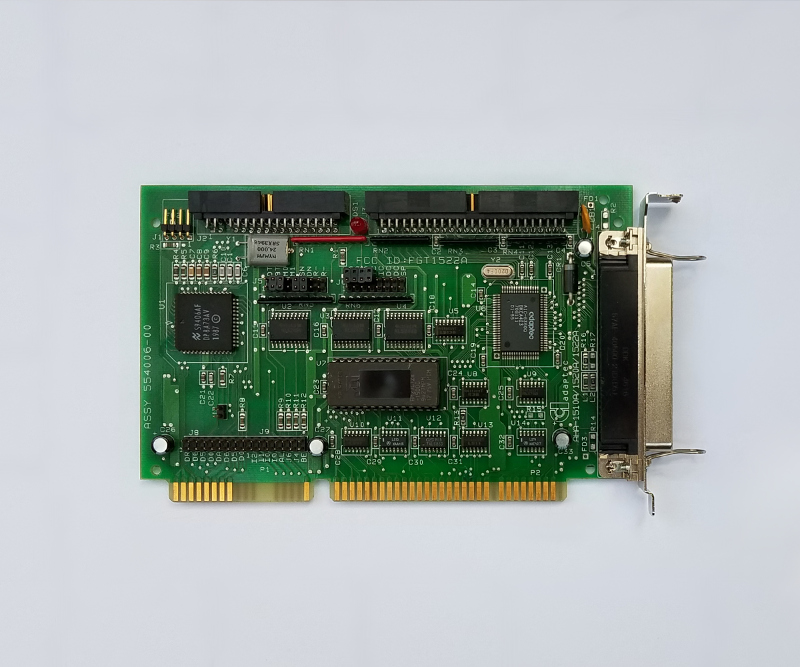
Adaptec AHA-1540/42B
A non bus-mastering controller. Allows it to coexist with IBM BL3 L1 cache. A big plus.
Does not handle well overclocking.
Works well in the 10MHz test.
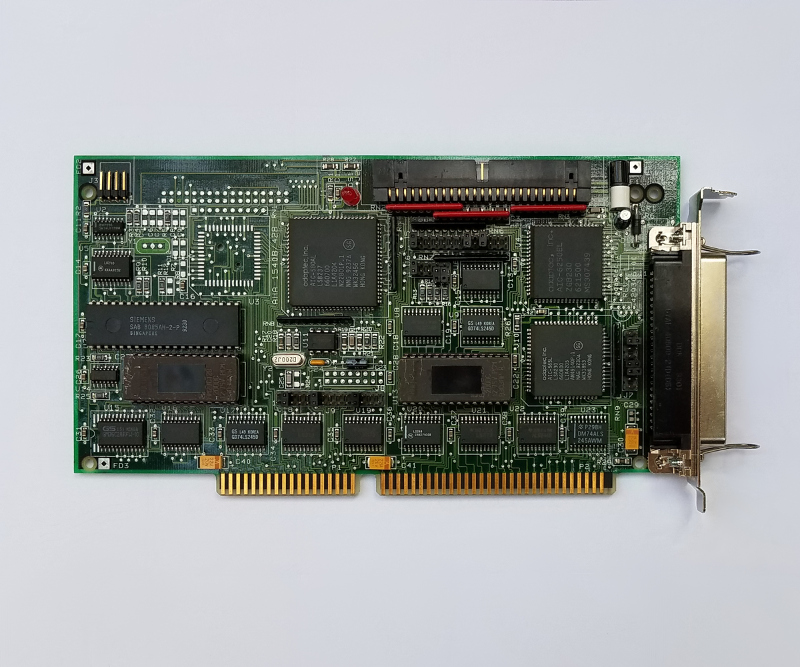
Future Domain TMC-1610m
Does not handle overclocking well - stops recognizing local storage device, hangs, etc.
Works well in the 386 baseline test. Above average performer.
Requires Acard adapter to see the bootable device at ID 0.
Drivers disk:
The attachment future_domain_tmc-1610m.zip is no longer available
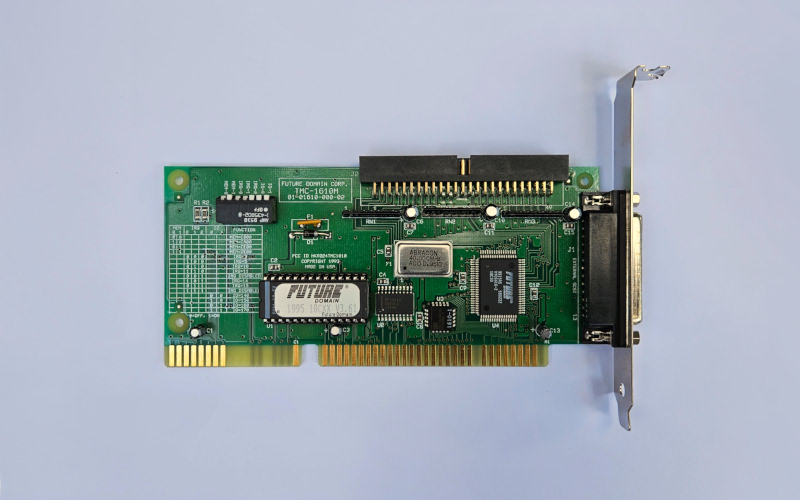
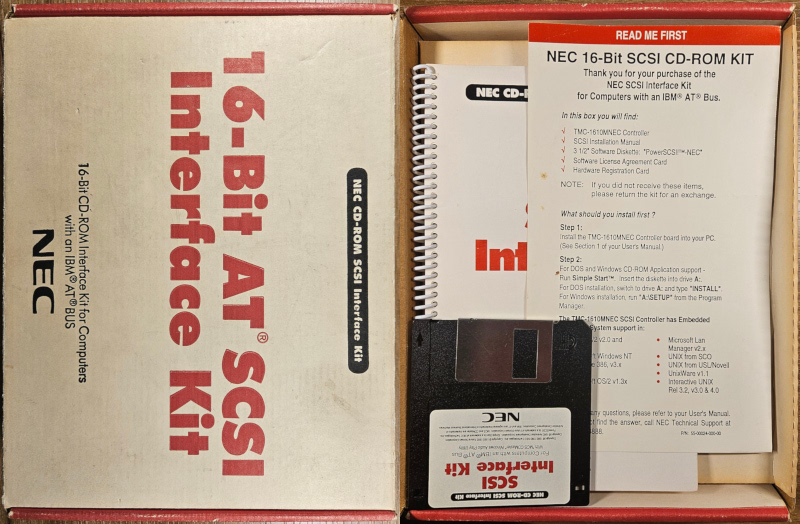
Holtek LCMSIO-2A
Functions in all tests but not fully stable at ISA bus running at 20MHz, or higher.
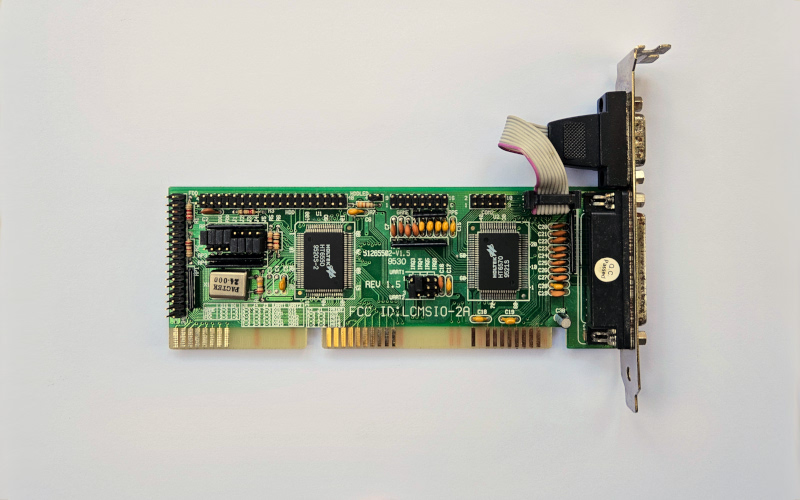
Unknown CCAT200A (SMC37C75L J P)
Not tested yet. Soon.
--- Results and conclusions
Numbers are in kilobytes per second.
First (or single) bar is Coretest.
Second bar is Speedsys buffered read speed.
Third bar is Speedsys linear read speed.
Gray bars indicate not fully stable system.
Label "BL3 L1" points to problems associated with the IBM BL3 processor when its level 1 cache is enabled. This issue specifically affects SCSI controllers. It's particularly regrettable since some of these controllers perform exceptionally well under peak overclocking conditions.
Label "WA" denotes write-access issues, which are observed in all IDE controllers when subjected to extreme overclocking. This problem is exclusive to CF cards. Occasionally, the controller might not complete a write operation to the local storage device, prompting a user dialog that offers options to "abort" or "retry." Selecting "retry" typically resolves the issue.
Label "flaky" signifies difficulties in configuring the controller to a functional state. However, once these initial setup issues are resolved, the controller operates effectively.
Label "SS CG" denotes SpeedSys corrupted graphics. So far only one controller causes it - Promise DC-2040.
386 extreme overclocking scenario 1: MSI MS-3124, IBM BL3 110MHz (2x55), 55MHz base frequency, ISA bus at 27.5mhz, 16Mb RAM, 256Kb level 2 cache.
ROM SHADOWING is turned off and not visible in the BIOS, but it can be activated using AMI SETUP. This causes considerable system instability, particularly due to the highly overclocked ISA bus. Consequently, SCSI controllers were evaluated without ROM SHADOWING enabled. As a result, their performance was slower than in the subsequent test scenario at 25MHz.
In general, all controllers who managed to pass the test encounter issues.
Advansys ABP-5140/42 and SIIG i540/542 would have been the standout performer if not for compatibility problems with the BL3's L1 cache and some instabilities - occasional PARITY CHECK errors.
Adaptec AHA-1520B and AHA-1530P were close to passing, but they occasionally disrupt the keyboard controller, leading to automatic progressions or erratic behaviors in some tests, games, and applications, similar to when certain keys are held down on the keyboard.
The PiC P4020/4021-based card emerges as the top IDE controller, offering exceptional speed and stability. However, it's not without its flaws, notably the occasional write-access issue that can arise with CF cards.
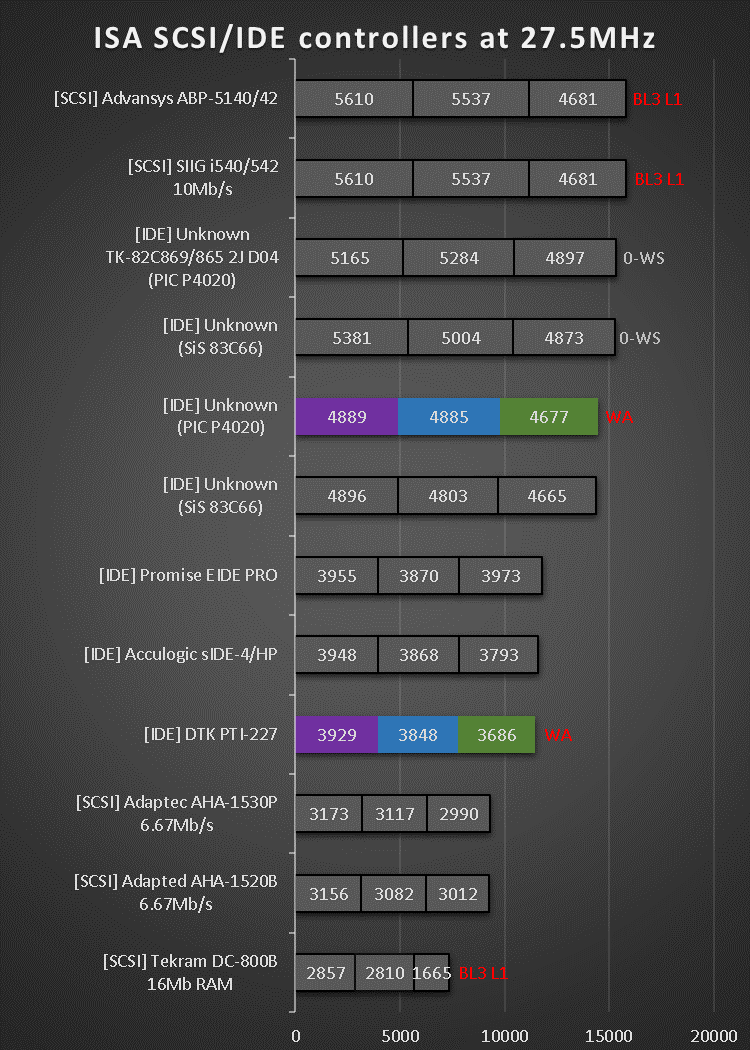
386 extreme overclocking scenario 2: DTK PEM-4030Y, IBM BL3 100MHz (2x50), 50MHz base frequency, ISA bus at 25mhz, 16Mb RAM, 256Kb level 2 cache.
2.5MHz less and the list of survivors grows significantly.
Big number of IDE controllers and almost the same number of SCSI ones.
The non bus-mastering AHA-1530P and 1520B are the clear winners.
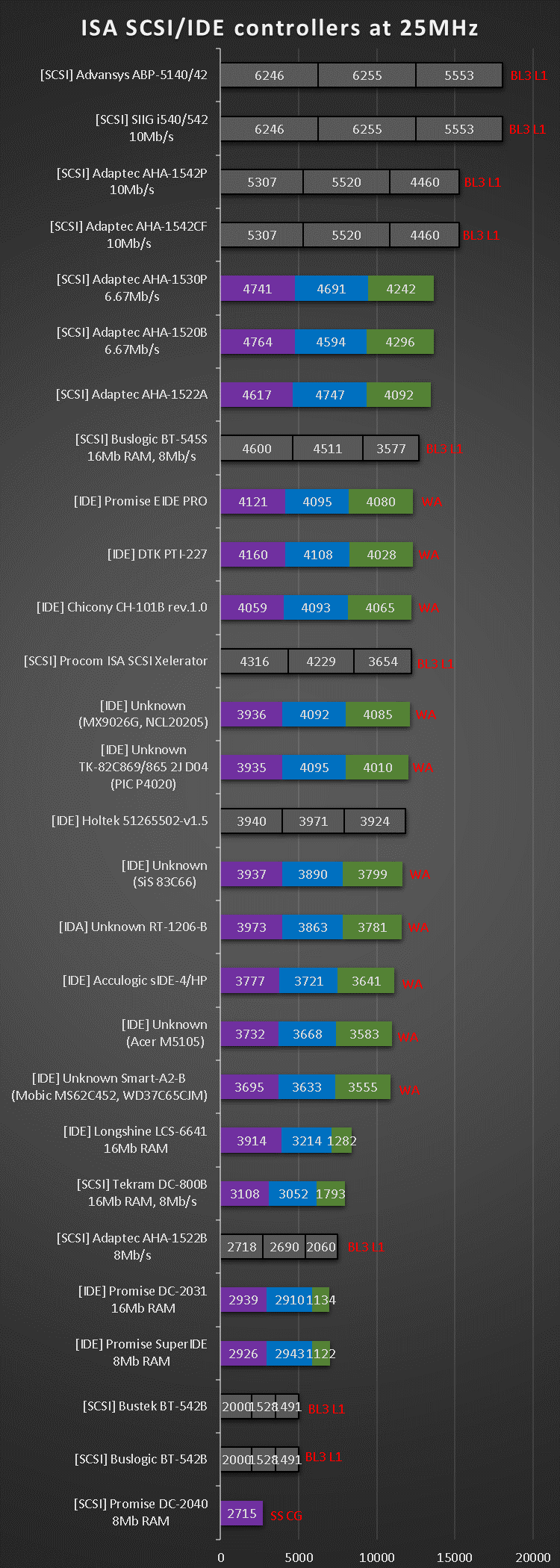
386 standard use case scenario, DTK PEM-4030Y, AMD 386DX 40MHz, 40MHz base frequency, ISA bus at 10mhz, 16Mb RAM, 256Kb level 2 cache.
As expected, all controllers worked in this test, with 2-3 exceptions.
SCSI dominates the field.
SIIG i540/542 and Advansys ABP-5140/42 are the clear winners - way ahead of everybody else.
In fact the performance they show does not fit my world view of what 10MHz ISA bus can do.
Yet, running concrete tests, like copying bulk of files, confirms the performance is real. Hey, i will take it.
No write-access issues with IDE controllers. This problem appears above the 3700Kb/s mark.

286 extreme overclocking scenario: Dunson Electronics 286-16, Intersil 30MHz, 30MHz base frequency, 30MHz ISA bus, 2Mb RAM, 0 wait states.
Numerous stability and performance tests were conducted. Showing only Coretest results for brevity, as the other results align with them.
No SCSI controller passed this test. In addition to the ones shown in the chart, couple more kind of worked out, but not fully stable:
Unknown (PIC P4020, yellow PCB), Unknown (Acer M5105), Unknown PM540, Promise EIDE Pro, Holtek 51265502-v1.5, DTK PTI-227, Acculogic sIDE-4/HP. Didn't add them to the chart below to reduce spam.
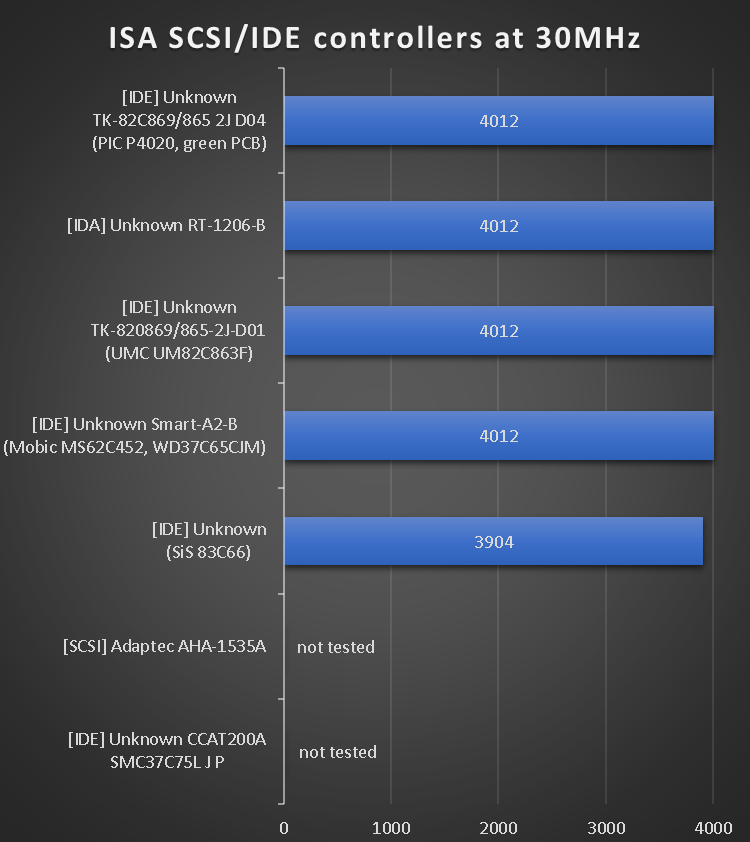
--- Summary
The IDE interface offers better scalability and reliability with CPU upgrades compared to SCSI. The performance of IDE improves with higher overclocking levels. Cards based on the PiC P4020/4021 are the top choices available. DTK PT-227 and Promise EIDE Pro are right next to them.
Under typical conditions, such as minimal or no overclocking and compatible CPU upgrades, SCSI is the preferred choice. The top-performing cards are SIIG i540/542, Advansys ABP-5140/42, Adaptec AHA-1530P, AHA-1520B. The two Adaptec cards with their non-bus-mastering design ensures compatibility with IBM BL3 processors. Also, they do very well when overclocked.
It is worth nothing that while IDE controllers are more or less plug and play, the SCSI ones require more time to setup properly. Often small details get in the way, which adds friction.
--- Feedback welcome
Do you recognize brands/models in the listed controllers ?
If you spot inconsistencies, or lack of clarity - please let me know.
Did you succeed to make Always IN-2000 and Trantor T160 work with CF cards ?

























































